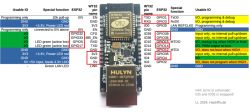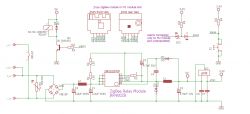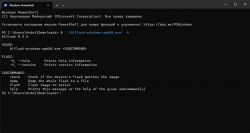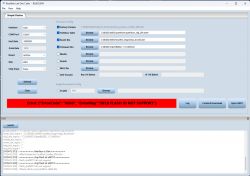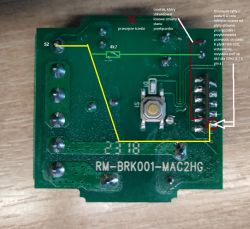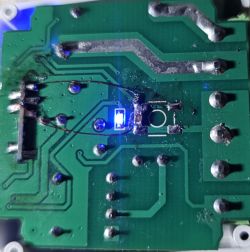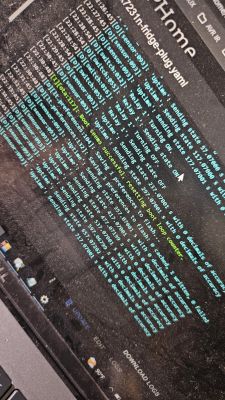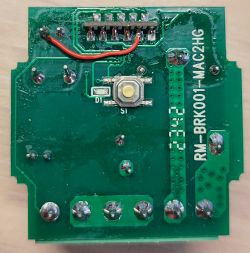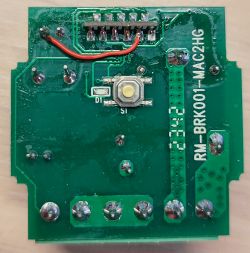




Relay based on SM-028_V1.3 module with BL602L20 chip.
These relays have a massive problem with the fact that they randomly turn the relay on and off. In order to fix this, you need to solder components C6 0.1 uF and R1 10 kOhm.

For firmware, I unsoldered the SM-028_V1.3 module, connected the
SM-028|UART
TX--------RX
RX--------TX
GND-----GND
3V3------3V
BT--------3V module with the uart adapter, and then connected the uart adapter to the PC.
I flashed it using the blflash program with the command '.\blflash-windows-amd64.exe' flash OpenBL602_1.17.402.bin --port COM7.
Configuration:
{
"vendor": "eWelink",
"bDetailed": "0",
"name": "MINI Smart WI-FI switch",
"model": "WI-FI switch",
"chip": "BL602",
"board": "SM-028_V1.3",
"flags": "1024",
"keywords": [
"SM-028_V1.3",
"BL602L20"
],
"pins": {
"3": "TglChanOnTgl;1",
"14": "LED_n;1",
"20": "Btn;1",
"21": "Rel;1"
},
"command": "",
"image": "https://obrazki.elektroda.pl/9338489200_1705009676.jpg",
"wiki": "https://www.elektroda.com/rtvforum/viewtopic.php?p=20904492"
}Cool? Ranking DIY




